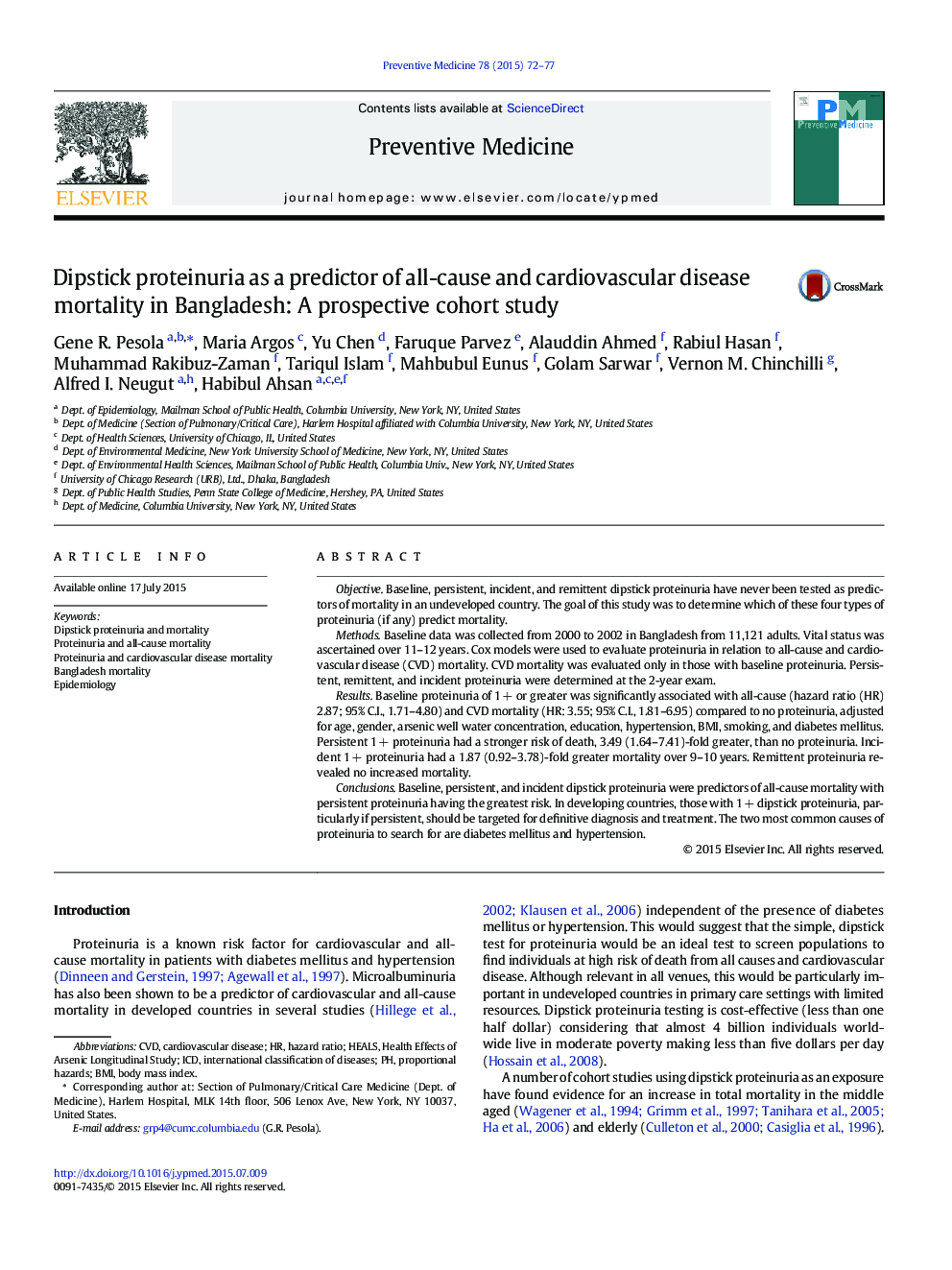| Article ID | Journal | Published Year | Pages | File Type |
|---|---|---|---|---|
| 3100411 | Preventive Medicine | 2015 | 6 Pages |
•Proteinuria as predictor of mortality has never been evaluated in an undeveloped country.•All four types of proteinuria have never been evaluated simultaneously in one study.•Three types of proteinuria were predictors of all-cause mortality in Bangladesh.•Persistent 1 + proteinuria was the strongest mortality predictor.•Baseline dipstick proteinuria was a predictor of cardiovascular disease mortality.
ObjectiveBaseline, persistent, incident, and remittent dipstick proteinuria have never been tested as predictors of mortality in an undeveloped country. The goal of this study was to determine which of these four types of proteinuria (if any) predict mortality.MethodsBaseline data was collected from 2000 to 2002 in Bangladesh from 11,121 adults. Vital status was ascertained over 11–12 years. Cox models were used to evaluate proteinuria in relation to all-cause and cardiovascular disease (CVD) mortality. CVD mortality was evaluated only in those with baseline proteinuria. Persistent, remittent, and incident proteinuria were determined at the 2-year exam.ResultsBaseline proteinuria of 1 + or greater was significantly associated with all-cause (hazard ratio (HR) 2.87; 95% C.I., 1.71–4.80) and CVD mortality (HR: 3.55; 95% C.I., 1.81–6.95) compared to no proteinuria, adjusted for age, gender, arsenic well water concentration, education, hypertension, BMI, smoking, and diabetes mellitus. Persistent 1 + proteinuria had a stronger risk of death, 3.49 (1.64–7.41)-fold greater, than no proteinuria. Incident 1 + proteinuria had a 1.87 (0.92–3.78)-fold greater mortality over 9–10 years. Remittent proteinuria revealed no increased mortality.ConclusionsBaseline, persistent, and incident dipstick proteinuria were predictors of all-cause mortality with persistent proteinuria having the greatest risk. In developing countries, those with 1 + dipstick proteinuria, particularly if persistent, should be targeted for definitive diagnosis and treatment. The two most common causes of proteinuria to search for are diabetes mellitus and hypertension.
